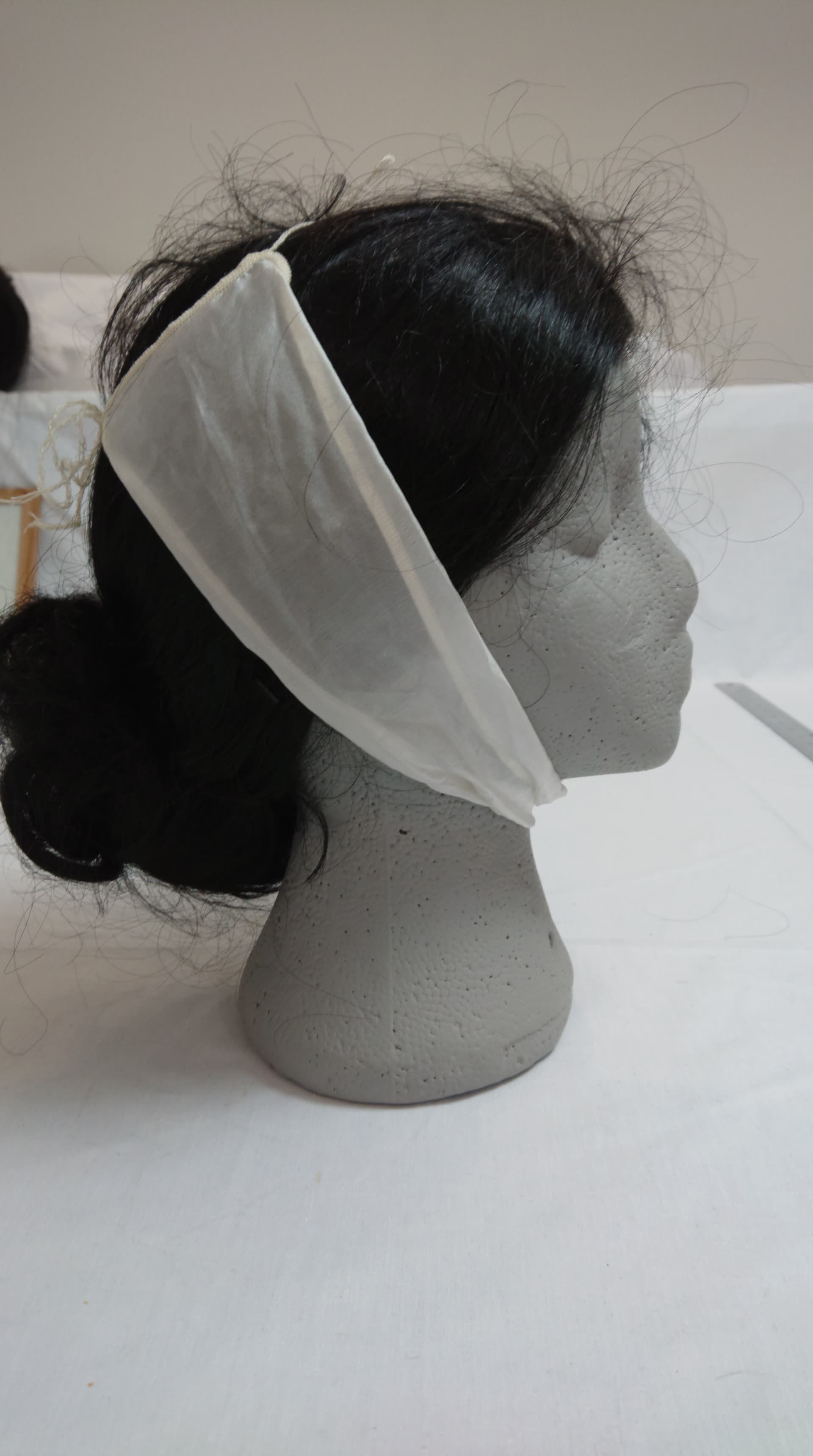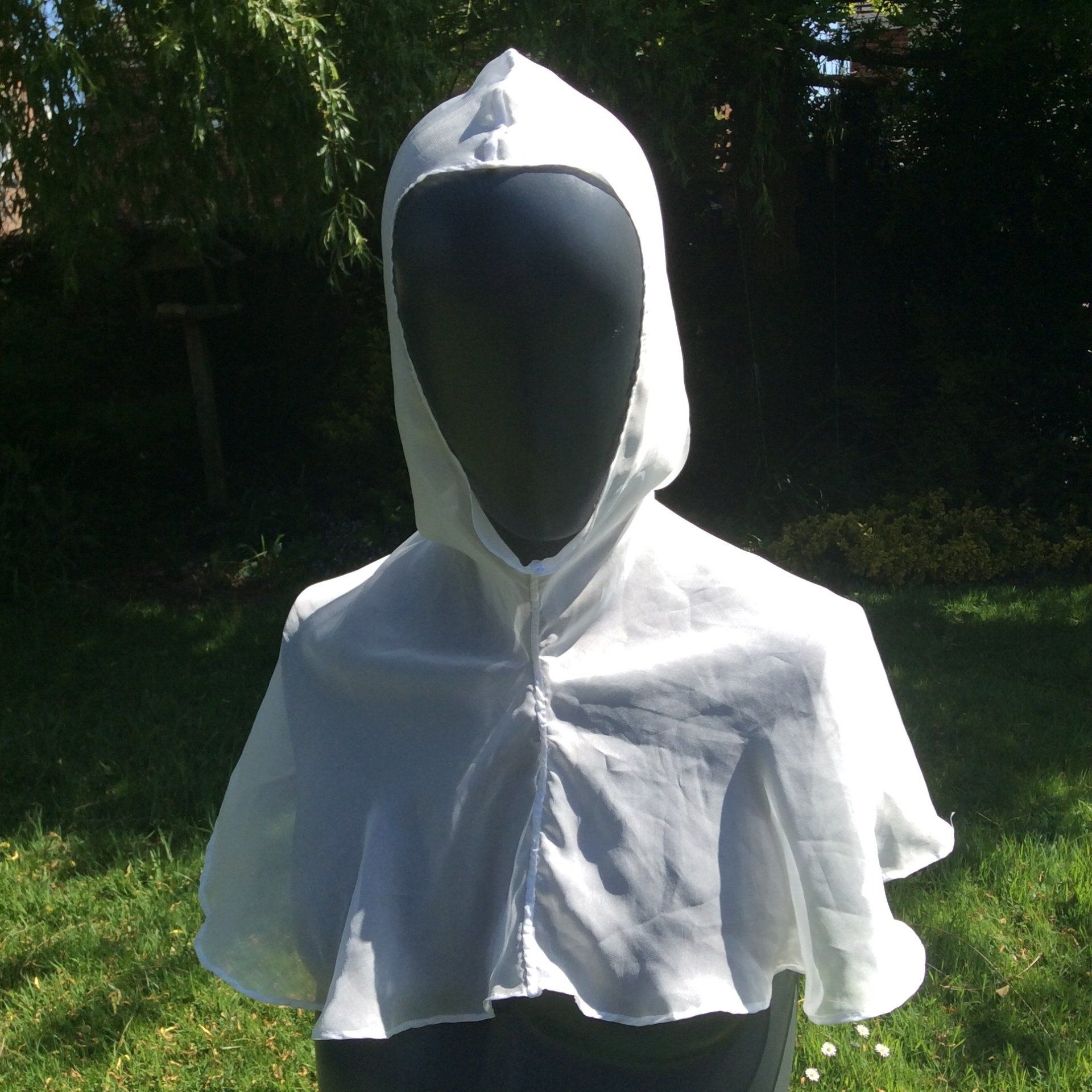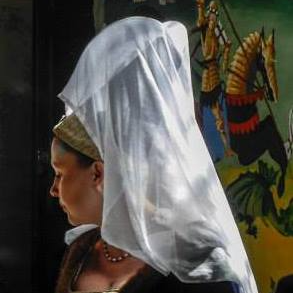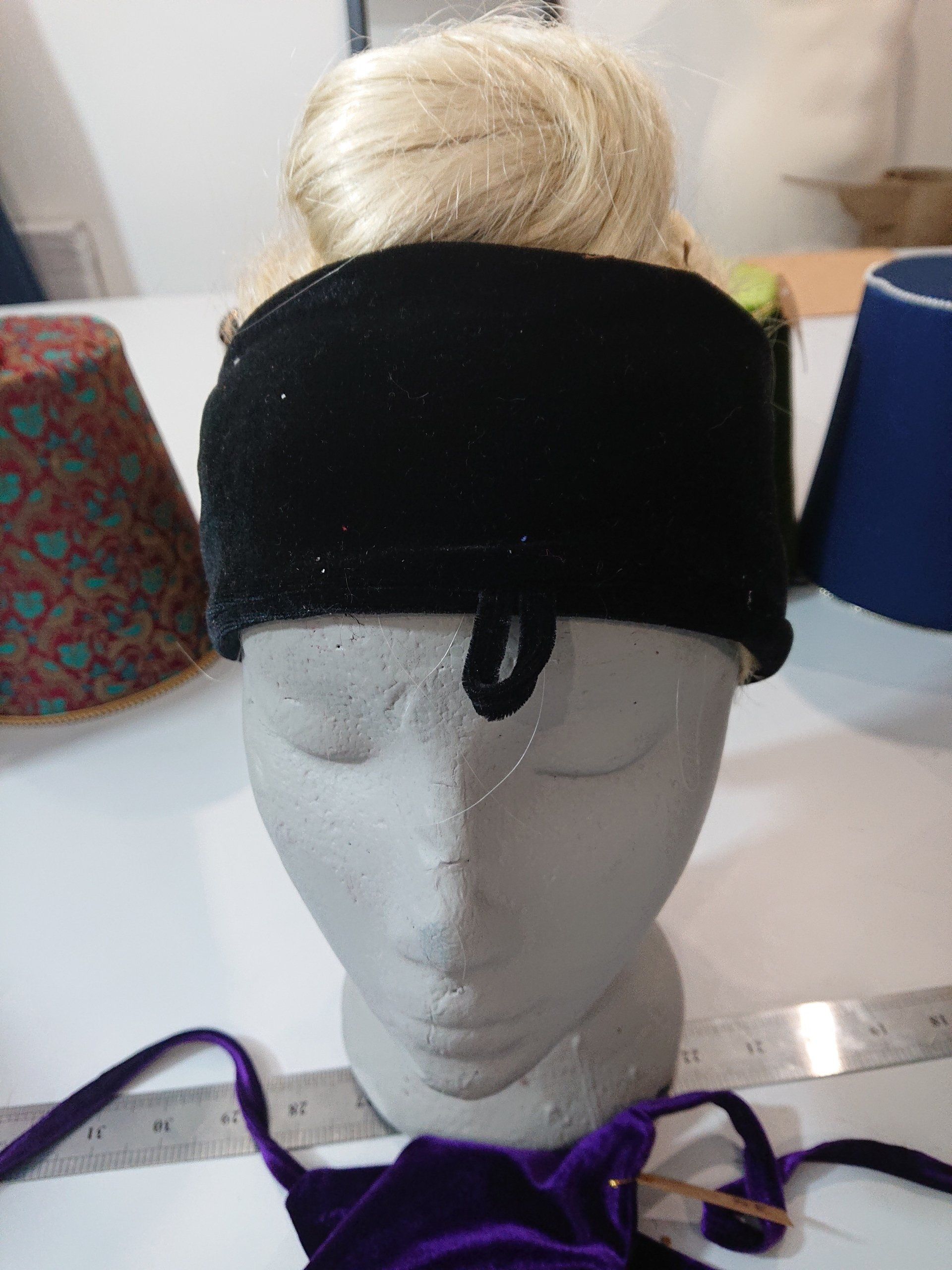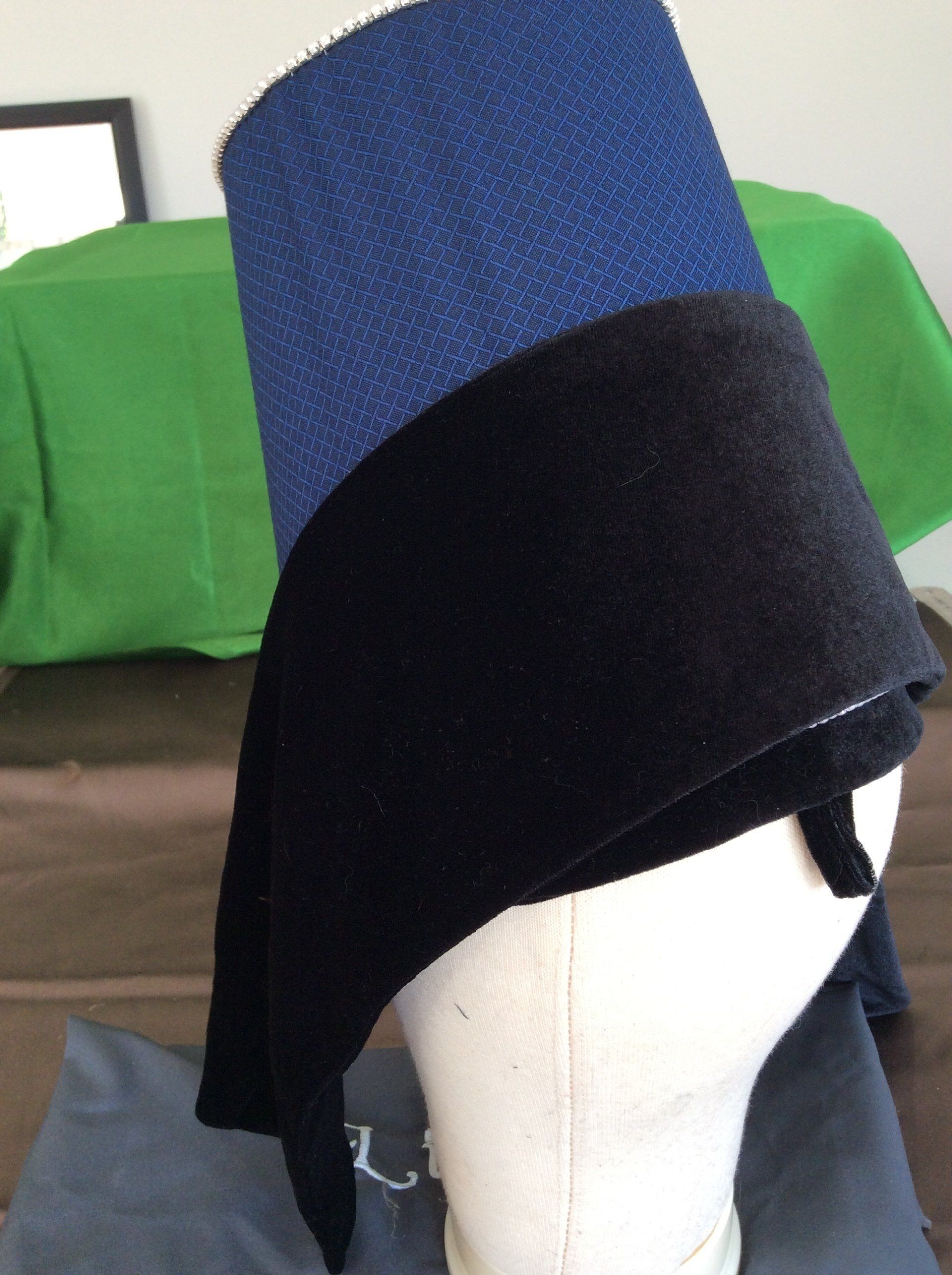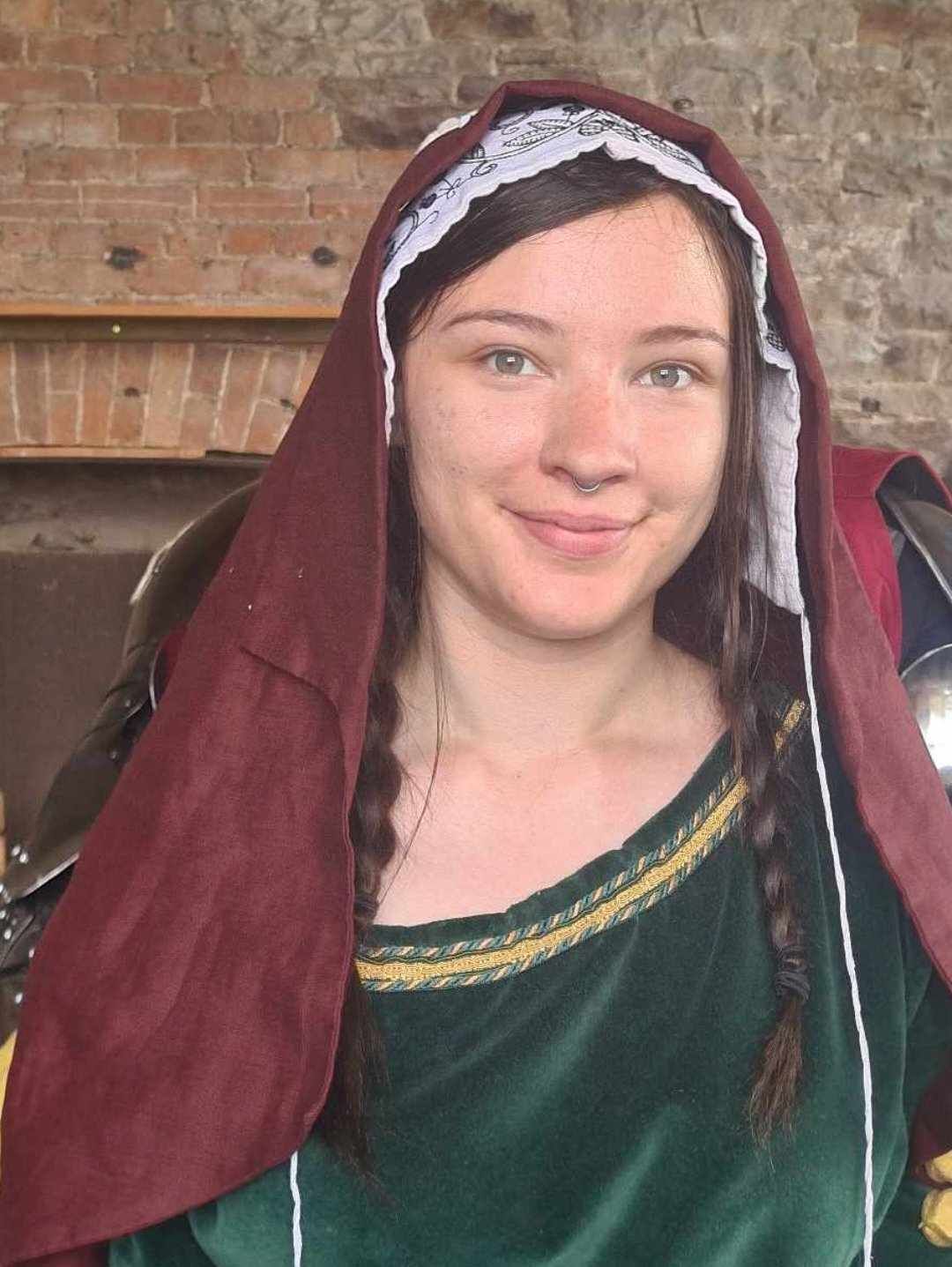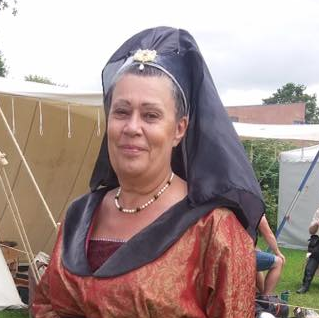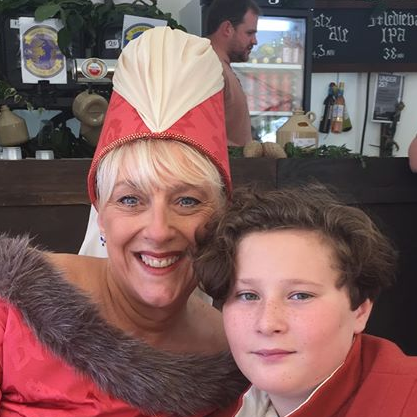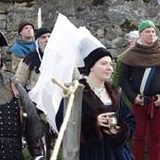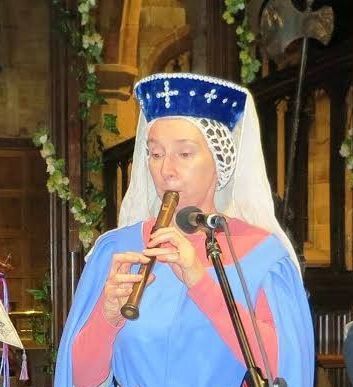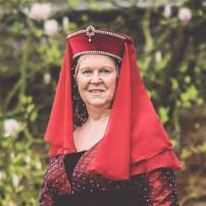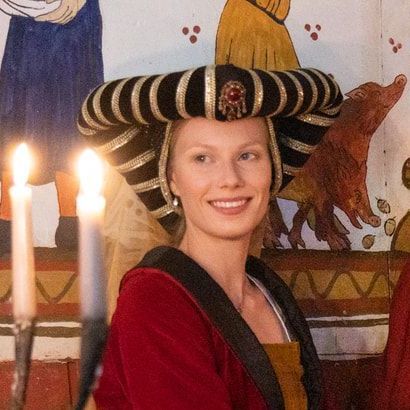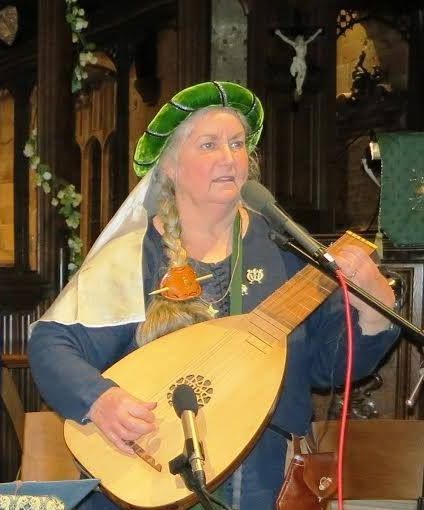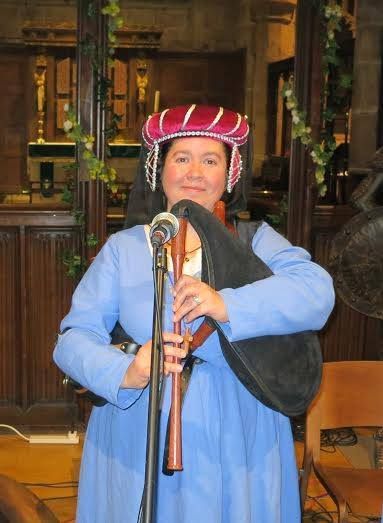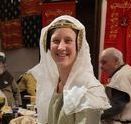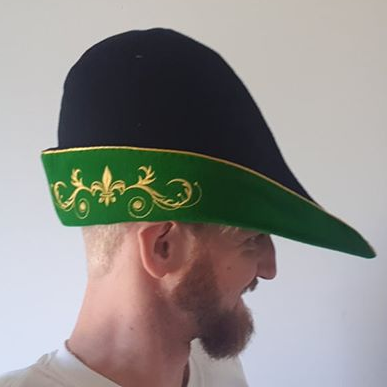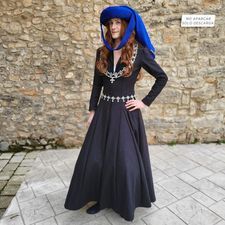

Women's Clothing: Headwear
14th & 15th Century Head wear Overview
As with most of the fashion of the time period, 14th and 15th century headgear changed considerably over the 200 years.
There was a expectation for women to cover their hair in the 14th century, this was mainly for religious reasons. By the 15th century it was for piety, comfort, or simply social standing. At the beginning of the 14th century even by the 15th century few would dare to leave the house without some sort of head covering, and fewer still would own no head covering whatsoever. Whilst there were a variety of styles across the continent, England spent much of the 14th Century with only a few styles in vogue across the wider population, with only a handful more that would enter into higher society. By the beginning of the 15th century things had begun to change.
Headwear is often one of the most important pieces to get right when engaging in re-enactment of any kind not just for visual impact, depending on your garments, but also to tell the right story. The 13th, 14th, and 15th Centuries all had greatly different styles of headwear.
Veils, Fillets & Wimples
Wimples 12th - 15th century
Wimples appeared in the early 12th century, it started as a fine linen or silk cloth draped chin and pined or tided. These eventually got merged with hoods to create full wimples.
Fillets 13th - 15th century
Fillets were introduced in the early 13th century, and took the form of a silk or linen cloth strip wrapped around the forehead, to keep the hair away from the head. By the 15th century the forehead has become becomes a status symbol with hair lines being shaved to reveal more forehead. Velvets versions not only kept hair in place and helped show off the forehead but also were also used to improve the fitting of Hennie type hats to keep them stable.
Veils 11th - 15th century
Veils were a cloth covering for the head, which can be traced back to before the 11th century. They change in size and shape over the century’s from a long piece of silk or fine linen into a half or full circle. There were worn well into Tudor times. Veils were attached to head wear in different places, or worn over or under according to taste and style of the time.
kerchief & Coif
kerchief 13th - 15th century
The word handkerchief derives from the word kerchief which came from two French words: couvrir, which means “to cover”, and chef, which means “head”; so a handkerchief is a similar cloth in the hand rather than on the head. (In the Middle Ages, kerchiefs were often used to cover the head.) This would usually be a piece of linen wrapped around the head. It could also cover the neck. There was a lot of different ways of wearing this type of head covering and was mainly worn by the poor, unfashionable and the elderly. The working class can also be seen wearing these instead of a coif.
Coif 11th - 15th century
This is the most used head covering for men, women and children of all ages and classes. These tightly fitting caps where tied under the chin and are believed to have started off in the 11/12th century, as covering for your head as was stated in the bible. You can see them worn under the kings crowns into the 14th century, under bycocket, sugar stacks and of course the hood, as well as being worn by workers in the fields. In the 16th century they were produced with heavy embroidering.
Hennie & Butterfly
15th century
These first appear around the 15th century. English version do not appear to have developed into the very long pointed versions they have on the continent. When you see the English wearing theses headwear you can often spot a small hoop of cord at the front, these were used to help keep the hat in place in high winds or if it over balanced.
This headwear is warn tilted backwards showing off the forehead, which was much desired in the 15th century, so much so that they even shaved the forehead to make it appear bigger.
Hennie is usually warn with a fillet (normally black velvet), giving the hat a place to be in pined, or with a comb inside to support it. The hair was tied in a high bun to help support the hat.
It can be also be warn with a velvet band over the front. These are most commonly warn with the veil attached at a centre point of the brim with a brooch and extending in a V over the top, held in place with hat pins. The veil can also be laid over the top of the Hennie, falling down the sides and back.
The butterfly is a late 15th century development of the Hennie. By adding wire to support under the veil you can achieve very fine looking "butterfly wings".
Barbette & Torque
13th-15th century
Barbette, introduced by Eleanor of Aquitaine and adopted by all classes in the early 13th century. It was a straight sided 2-3” high band worn often with a fillet, which had a band of fabric around the forehead keeping the hair away from the face. Some times worn with a wimple as well.
The Torque was most likely a development of the Barbette, around the mid 13th century. The top was now larger tapering in to s smaller bottom. In the 13th century it is warn with the veil underneath it, by the 14th century the veil was placed on top. In the late 14th early 15th century the top of the torque had been closed in. The Torque was warn by most classes but the higher classes used more elaborate and expensive fabrics as well as embellished them with jewels and pearls.
Padded Roll & Heart
Padded Roll 13th - 15th century
Padded Rolls were mainly seen in the 13th century worn flat with the veil on top. By the 14th century the veil has been placed over the top. In the late 14th early 15th padded rolls are being tilted on the head showing more fore head, with the veil going around under the chin. Later they are being added to with additional shapes to develop new hats such as the Hearts and cows horns.
Heart 15th century
Heart are a development of the padded roll with a version of the crespinette attached. These were shaped like a V when viewed from front or back, earing pieces were then attached to the sides. These were much admired headwear in the mid 15th century as headwear became more larger and ornate.
Crespinette & Templars
14th -15th century
Worn over the ears and used to cover their braided hair the Crespinette started in the 14th century. They were usually made of gold wire and encrusted with gems and pearls. Crespinette could also be covered by a veil.
Templars, introduced by queen Phillippa in the 14th century where normally metal cylinders that hang down the side of the head. These contained the platted hair, normally encrusted in jewels or pearls, sometimes even decretive metal work, supported by a circlet around the head. Veils would be usually worn with them covering more of the hair.
Cows Horns
15th century
Cows horns believed to have been named after a bishop said that is what they looked like. This headwear came in many different forms, on some the horns go out sideways, others the horns stand up straight on each side of the head. The mid 15th century was when you can see extreme examples of these being worn.
Bycocket, Hoods & Coif
These were all hats commonly worn by both men and ladies. Head over to the men's section to read more about them.
